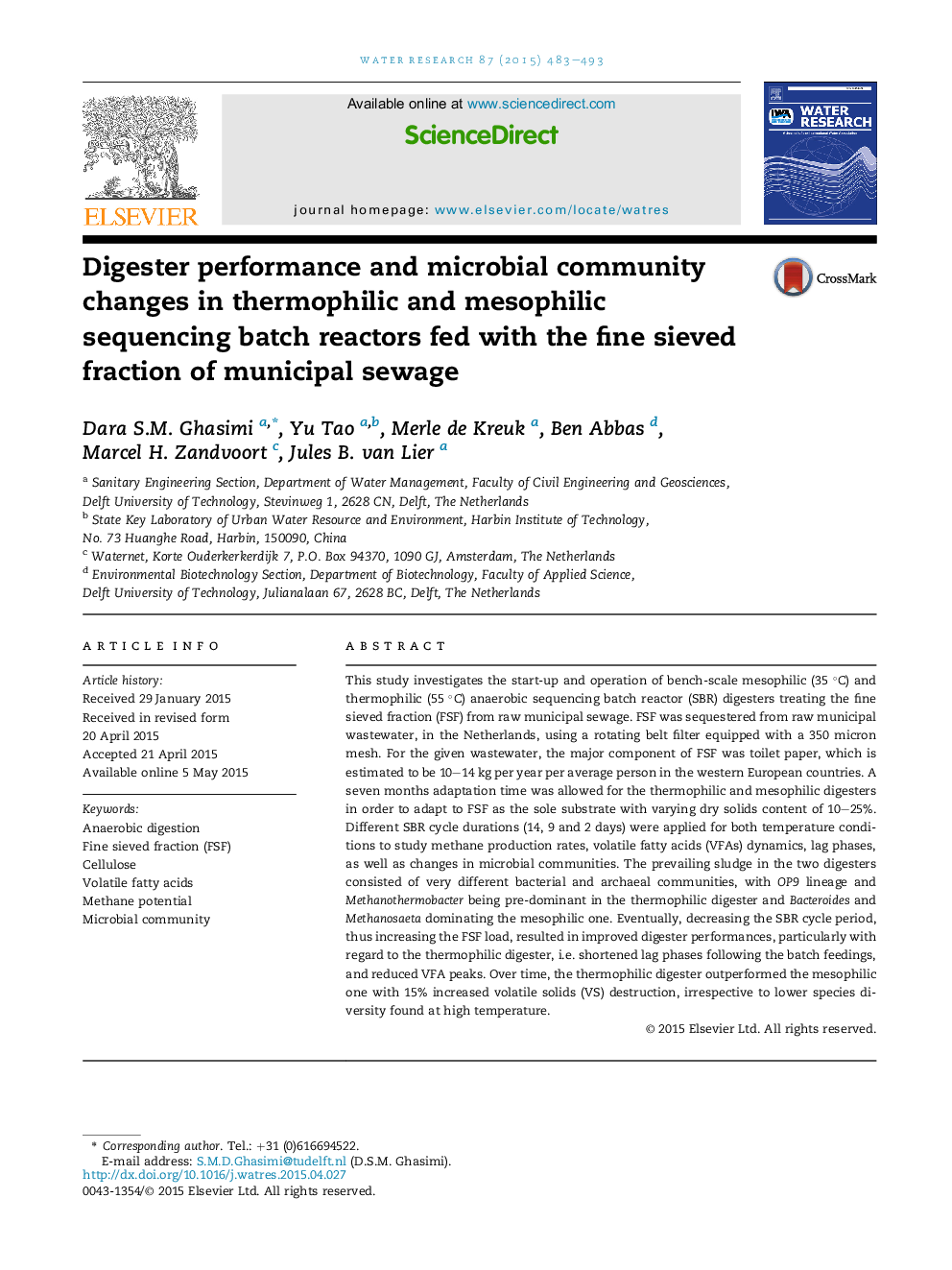| کد مقاله | کد نشریه | سال انتشار | مقاله انگلیسی | نسخه تمام متن |
|---|---|---|---|---|
| 6366050 | 1623081 | 2015 | 11 صفحه PDF | دانلود رایگان |
- Fine sieved fraction (FSF) from raw municipal sewage was used a sole substrate.
- Various batch operational conditions were conducted at thermophilic & mesophilic conditions.
- Microbial community's changes were studied for both conditions.
- Long adaptation times were surprisingly found for the thermophilic digester.
- Over time, thermophilic digester was more stable & outperformed the mesophilic one.
This study investigates the start-up and operation of bench-scale mesophilic (35 °C) and thermophilic (55 °C) anaerobic sequencing batch reactor (SBR) digesters treating the fine sieved fraction (FSF) from raw municipal sewage. FSF was sequestered from raw municipal wastewater, in the Netherlands, using a rotating belt filter equipped with a 350 micron mesh. For the given wastewater, the major component of FSF was toilet paper, which is estimated to be 10-14 kg per year per average person in the western European countries. A seven months adaptation time was allowed for the thermophilic and mesophilic digesters in order to adapt to FSF as the sole substrate with varying dry solids content of 10-25%. Different SBR cycle durations (14, 9 and 2 days) were applied for both temperature conditions to study methane production rates, volatile fatty acids (VFAs) dynamics, lag phases, as well as changes in microbial communities. The prevailing sludge in the two digesters consisted of very different bacterial and archaeal communities, with OP9 lineage and Methanothermobacter being pre-dominant in the thermophilic digester and Bacteroides and Methanosaeta dominating the mesophilic one. Eventually, decreasing the SBR cycle period, thus increasing the FSF load, resulted in improved digester performances, particularly with regard to the thermophilic digester, i.e. shortened lag phases following the batch feedings, and reduced VFA peaks. Over time, the thermophilic digester outperformed the mesophilic one with 15% increased volatile solids (VS) destruction, irrespective to lower species diversity found at high temperature.
390
Journal: Water Research - Volume 87, 15 December 2015, Pages 483-493
